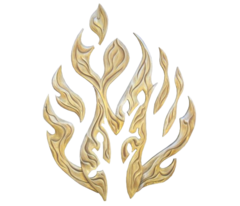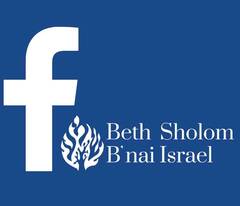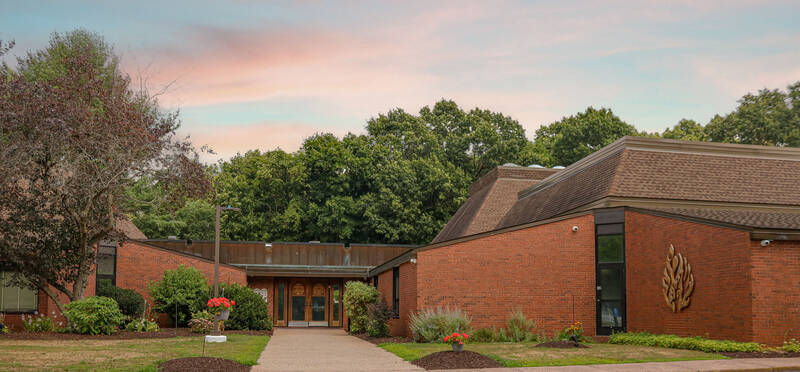Teruma 5784 February 17, 2024
Shabbat Shalom.
The final third of the Book of Exodus reports all the information needed to plan and build the Mishkan, the portable sanctuary that would become the centerpiece of the Israelite camp. With only a small break in the text to record the incident of the Golden Calf, the blueprints, architectural plans, the patterns for the priestly garments, and the construction details of the project will fill the next five parshiyot.
What we find, when we examine the results of all this planning and construction, is a tent and courtyard that look like boxes within boxes; one square of the courtyard has at its center the holy tent. One square of the holy tent, the actual Mishkan, is the Holy of Holies, and in the center of that square is the Aron HaEdut, the Ark of the testimony. The presence of God is said to hover above this box; and inside of the box are the second set of tablets that Moses carved out and God inscribed with the words of the commandments. Also inside the box are the broken stones of the first set of tablets, the one that God carved out but Moses broke when he found the children of Israel worshipping the Golden Calf. Some say that also inside that box was the original scroll of the Torah that Moses himself wrote and which was deposited inside the Ark after Moses died.
The Ark itself is an interesting piece of furniture. It is a box, made out of wood but covered with gold both on the inside and the outside. The box did not have a top; it was open on the top but was covered by a slab of pure gold with two “Cheruvim” facing each other on the top with wings outstretched, all made of one piece that sat on top of the box. We are not sure of the translation of Cheruvim but later commentators call them cherubs or angles. In the space between their outstretched wings was the space where God’s presence was said to dwell.
The oddest thing about this box with its elaborate cover is that it was seen only once a year, on Yom Kippur through a cloud of incense; and the box itself was never opened. The gold on the inside was only an honor to respect the holy objects inside.
For all the holiness ascribed to it, the name of the box, the Aron HaEdut, the Ark of the Testimony, is a rather plain name. Aron is the Hebrew word for a container. In modern Hebrew, Aron can mean a closet or a wardrobe. Aron is also the Hebrew word for a burial casket. When the people of Israel were moving from one place to another, the Aron HaEdut would be carried on poles resting on the shoulders of the Levitical family of Kahath. Right behind the Aron HaEdut was another Aron, a casket carrying the embalmed body of our Patriarch Joseph who had made the Israelites promise that after he died, he would be buried in the land promised to his great grandfather Abraham. The two containers, one with the commandments and one with the bones of Joseph, or, we can say, the one that represented the living God was carried next to the one with body of the dead.
Rabbi David Kasher, from Yeshivat Hadar in New York City, notes that the only two times in the entire Torah that the word “Aron” is used is for the Aron HaEdut, except for the first time, when it occurs at the end of the Book of Berayshit/Genesis where Joseph’s body is put in an “aron” or a coffin. Rabbi Kasher notes that while it seems to be a word used in two entirely different contexts, one for life and one for death, the history of the Aron HaEdut is often not about life at all; the Aron HaEdut is the cause of much death.
Rabbi Kasher writes: “Indeed, the Ark will often be associated with death. When it is taken captive by the Philistines (in 1 Samuel 5), it brings death and destruction wherever it is stored.5 When David eventually attempts to bring the Ark to Jerusalem, they load it onto a cart and head back with great fanfare, singing and dancing in front of it. But when at one point the oxen pulling the cart stumble, and Uzzah reaches and grabs the Ark to save it from falling, God immediately strikes him down for touching the Ark, and: “וַיָּמׇת שָׁם עִם אֲרוֹן הָאֱלֹקִים - [Uzzah] died there with the Ark of God” (2 Samuel 6:6). Even after the Ark is installed in the Great Temple, every year during the Yom Kippur ceremony, when the High Priest entered the Holy of Holies, the people waited with bated breath to see if he would emerge “בלי פגע - unharmed.” There is a third-rail quality to the Ark; its power can be annihilating to anyone who comes too close—even with good intention.” I should also note here that later on, the High Priest would go into the Holy of Holies with a rope around his waist so that if something did happen to him, the other priests could pull him out!
We like to think of holiness as a constant source of life, but we are human beings, mortal and physical, unlike God who is immortal and metaphysical. To gaze upon the face of God brings death. At Mt. Sinai, the people were so afraid of just the thunder and lightning that when they heard the voice of God they became terrified and insisted that Moses go up the mountain and listen to God. The people were sure that even the voice of God would cause them to die.
There is a very famous story in the Talmud of four scholars who entered “The Garden.” Most Rabbis assume that they tried to understand the mystical aspects of God. They attempted to get closer to the holiness of God. They were young scholars who did not fully understand what they were getting into. Shimon ben Zoma looked and died. The Talmud only refers to him as ben Zoma, not using his first name to prevent the shame that he could not get close to God. Shimon ben Azzai looked and went insane. The Talmud only refers to him as ben Azzai, also to limit the shame of not being worthy. Elisha ben Abuya looked and became an Apostate. This was so terrible that they never would use his name again, he became known as “Acher” the “other” one. Only Rabbi Akiva, who was almost 30 years older than the other sages, entered and departed the “Garden” unscathed. Only Rabbi Akiva had the maturity and the understanding to be so close to God.
But Rabbi Kasher goes on to say that the Aron of death also can bring life. The Sages ask why the broken pieces of the first tablets, the one shattered by Moses, would be carried in the Aron HaEdut? It seems that just because they were broken, does not mean that they have lost all their holiness. In honor of the holiness that they once carried, they are still honored even after the source of their holiness is gone. The lesson here is that Torah Scholars, even after they have died and all their learning is gone, we still respect their bodies and honor the Torah they once carried. In some ways, that also explains why a casket is also known as an “Aron.” All human beings carry the image of God. We each have a spark of the divine within us and when we die, that holiness may return to God who gave it to us, but like the broken tablets, we too are worthy of being carried to the grave in an “aron.” Says Rabbi Kasher, “… our containers become broken, and all that remains are our bones. They are not the human life itself, but like the tablets, they are a testament to what once was.”
Rabbi Kasher concludes, “That is what the Ark represents for Israel: not an object, but a container; not an essence, but a vessel. It can contain life and death, holiness and brokenness. It is powerful not because of what it is but what it can hold. The aron is very much like a human being in that way. We are all vessels, capable of containing the most sacred things: Torah, holiness, the Image of God. We carry these things only temporarily, but even after they depart, how can we not honor the vessels that once held them?”
It is little wonder that the Sages note that the Aron HaEdut was covered in gold both inside and outside. It teaches us an important lesson. If we are to be vessels of holiness, vessels of Torah; if we are to be the image of God, then our insides must be as gold and pure as our outside. We can’t pretend to be on the outside what we are not on the inside. I know that this lesson would give me an easy opportunity to take a swipe at the politicians of this country, who try to be one thing for people to see and another when they are in a private audience. Still, it applies not only to politicians, but it applies to all of us.
God knows that what we show on the outside is often quite different from what we feel on the inside. Some of us may be better at hiding our deficiencies than others, but we all have our, all too human, flaws. Any psychiatrist can tell you when our insides become too different from our outsides, the outside begins to show evidence of the corruption that is inside. We have to sometimes probe deeply to find the internal cause of our external behaviors.
We need to carry the lessons of Torah inside and practice the lessons of Torah on the outside. We need to study the words of Torah to strengthen our soul and then practice the Mitzvot with our bodies so that we will be worthy vessels of holiness. We don’t have to be perfect, but we do need to keep our focus on how we can be better, both inside and out.
Our people carried two “Arons” through the wilderness. One contained the words of the living God, the other the bones of the patriarch who had died after a life of service to others. The two vessels are not opposites at all; both are vessels of life and death. Both are vessels that carry holiness, in this world and in whatever world may come. One vessel carried the holy words, capable of bringing life and death; the other vessel carried the bones of the dead who had lived a holy life.
Our parsha begins with the declaration that God would have us build a Mishkan so that God can dwell within us. We are the vessels of holiness; we are the containers of Torah; we are the location where God can be found. If we can live our lives outside to reflect our holiness inside, we will be very blessed indeed.
May God always find us worthy vessels, a worthy “aron” for the holiness of God as we say…
Amen and Shabbat Shalom




